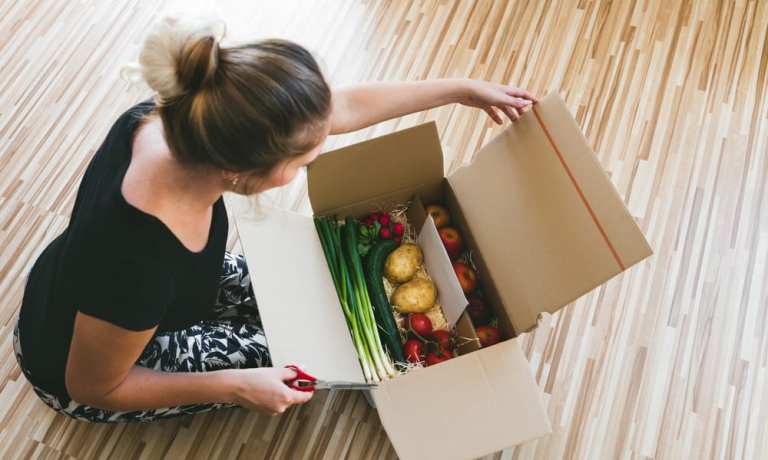
Grocers have found themselves dealing with consumers rushing to online solutions as health concerns and product shortages drove them to seek alternatives during the COVID-19 pandemic.
Data from the first week of March showed that just 11 percent of surveyed U.S. consumers were buying groceries through digital platforms, but that share increased to 37 percent by March 22.
PYMNTS research in March that found that many grocers had closed their physical locations amid stay-at-home and social distancing directives, leading to 39.5 percent of surveyed American consumers visiting grocery stores less often.
PYMNTS data from April suggested a large number of them may have permanently converted to online tools in that time period: 19.7 million consumers said they would not go back to shopping for groceries in stores when the pandemic ends.
Late March data found that 30 percent of these customers were using grocery delivery options, although many are expected to use mobile apps, subscription meal-kit services and typical delivery options in June rather than physically visiting grocery stores.
Examining increased mobile app, same-day delivery and online order volumes will thus be crucial for grocery stores, which must determine which tools consumers are using to temporarily ease difficulties and which should be supported in the pandemic’s aftermath.
The following Deep Dive explores the technologies and features grocers are employing, why shoppers are interested in them, and the factors grocers must consider when investing in solutions for their industry’s future.
Lessons Learned
The grocery industry was making moves toward same-day delivery tools and mobile platforms for quicker ordering before COVID-19 shook normal operations, but grocers now find themselves dealing with customers who became dedicated digital grocery channel users almost overnight. Online grocery sales reached a record $4 billion in March, according to one study, and April sales shattered that record by approximately 37 percent, with online purchases climbing to $5.3 billion for the month. Usage of apps like Instacart or branded mobile apps like Amazon Fresh have also increased, with 24 percent of consumers in one recent survey noting they are now using the former and 31 percent using the latter.
What and how consumers buy has also changed, with 76 percent stating they are not currently making efforts to find their preferred brands, instead buying the ones that are in stock, and another 46 percent are reportedly shopping in bulk. Many of these purchases are likely driven by rising concerns over the scarcity and rising prices of items such as eggs, meat and cereal. Food prices in the U.S. increased 2.6 percent in April compared to March, representing the highest month-to-month jump in 50 years.
These trends are occurring in other retail areas, but the massive shift from typical consumer behavior makes them particularly notable for the grocery industry. Online grocery delivery existed prior to the pandemic, but weekly or biweekly trips to brick-and-mortar stores were still part of most U.S. consumers’ routines. This has changed in two short months, and 73 percent of customers claim they now shop at physical grocery stores less often.
Grocers must now consider how to provide the digital tools shoppers are using to buy their groceries to make sure they have quick access to goods. The question is not why shoppers are having their food delivered to their homes or shopping more often on mobile apps, but which of these behaviors is likely to remain once the pandemic ebbs.
Getting Ahead of the Grocery Curve
Health concerns and social distancing guidelines are likely to keep customers transacting online for the next several months, and grocers must be prepared for what this means in both the long and short term. PYMNTS research conducted in March found that even customers who reported being “slightly” concerned about COVID-19’s health risks reduced their brick-and-mortar shopping trips by 8.3 percent, for example. Forty-seven percent of U.S. individuals in another study have since said that it was “very” or “extremely” likely that they would make fewer trips to physical stores once the pandemic has passed due to lingering public health concerns.
Another report on Canadian grocery shopping habits expects food delivery mobile app revenues to hit $2.5 billion by the end of 2020, up from $1.5 billion in 2019. Customers who use mobile apps for their grocery orders appear to be impressed by their convenience, too, with 27 percent in one recent report noting they plan to keep using them when the pandemic ends. Mobile delivery apps may thus represent larger portions of grocers’ order volumes over the next few years, meaning grocery chains may want to consider their current mobile strategies and whether they match customers’ expectations.
These retailers might also want to reevaluate their brick-and-mortar locations’ roles, as the pandemic has suppressed in-store shopping levels and may continue to do so for several more months. Sixty percent of customers now report feeling anxious when visiting brick-and-mortar stores, although in-store shopping did not completely disappear. Average weekly shopping trips dropped from 2.5 per customer before the pandemic to one per week during it, which shows many still view entering physical grocery stores as important — or at least familiar — parts of how they shop.
The grocery industry appears to be growing more omnichannel, with traditional brick-and-mortar operations now working hand-in-hand with online and mobile options to provide seamless experiences. Chains must consider which tools and technologies they can implement in their physical stores to match the convenience customers have discovered with online ordering and delivery — and find the combination that will provide the most effective services for their shoppers.